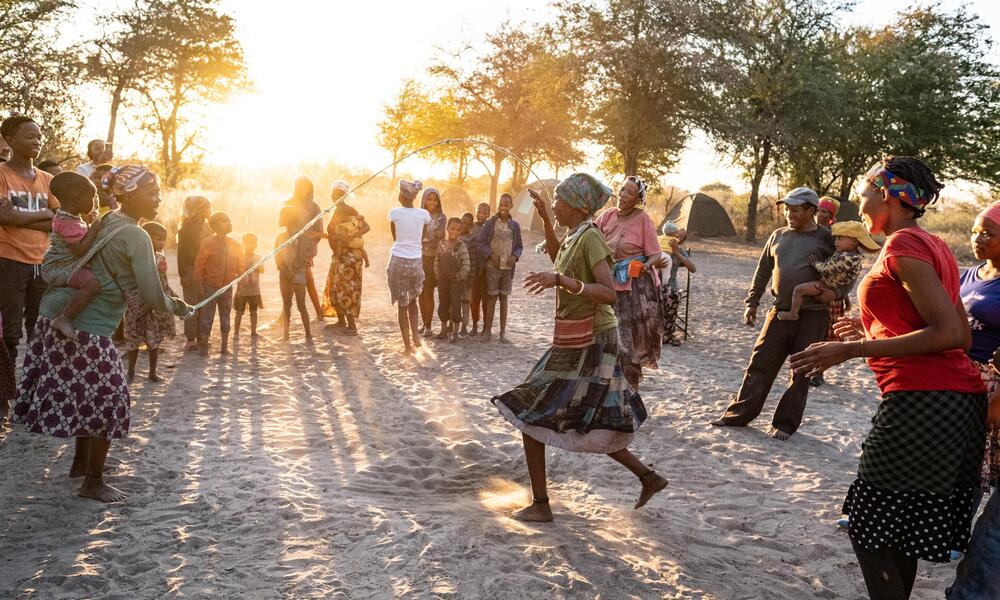What is a communal conservancy?
Before Namibia’s independence in 1990, wildlife populations in the country’s communal areas had plummeted because of an apartheid regime that alienated communities from their wildlife compounded by factors including uncontrolled hunting by military forces during independence struggles, extensive poaching, and severe drought.
In 1996, the new Namibian government granted communities the right to create conservancies—areas with defined borders and governance and management structures outside of parks—where communities have the right to manage and benefit from their wildlife.
Learn more about communal conservancies.
In the northeastern part of Namibia, bordering the Khaudum National Park and nestled within the KAZA landscape, lies Nyae Nyae Conservancy and Community Forest. Established in 1998, Nyae Nyae is one of the first four conservancies declared by the Namibian government. Here, in an area of about 3,500 square miles, abundant herds of elephants and wildebeest roam freely, flamingos migrate to the area’s pans, and Baobab trees stand tall as symbols of strength and tradition.
The region is home to the San community, whose legendary culture is renowned for living in harmony with nature, dating back to prehistoric times. As exceptional hunters, nature is woven into every aspect of San life. The local brandy bush is transformed into a skilfully crafted bow and spear for hunting. Beetle larvae become a potent poison for arrows, and glue from the sliver cluster leaf Terminalia is used to repair broken arrows. A simple wooden blade turns a succulent leaf into a versatile rope used for weaving traps.
The San connection with the land goes beyond survival, it is a mutually beneficial partnership between the San and the earth. Using their Indigenous knowledge, they use various trees and herbs to heal ailments from coughs to joint pain to kidney issues to snake bites. Through their time spent in the bush, they’ve come to know the land’s secrets, from which plants are good for food and which offer healing remedies. Tubers yield refreshing drinks and cleansing waters, while the sweet wild berries are perfect on-the-go snacks during long walks through the bush.
The San tradition of sharing and giving back is ingrained in everything they do. When they harvest, they do so carefully, leaving roots intact which allows for regeneration. It’s an unspoken promise to the earth that gives so much to them. Devil’s claw is an important medicinal and economical plant that the San in Nyae Nyae harvest sustainably They meticulously take only part of the plant, leaving the rest to grow naturally. This ensures the plants keep thriving in their habitat. By selling the harvested Devil’s Claw, the community earns money that supports their families and way of life.

